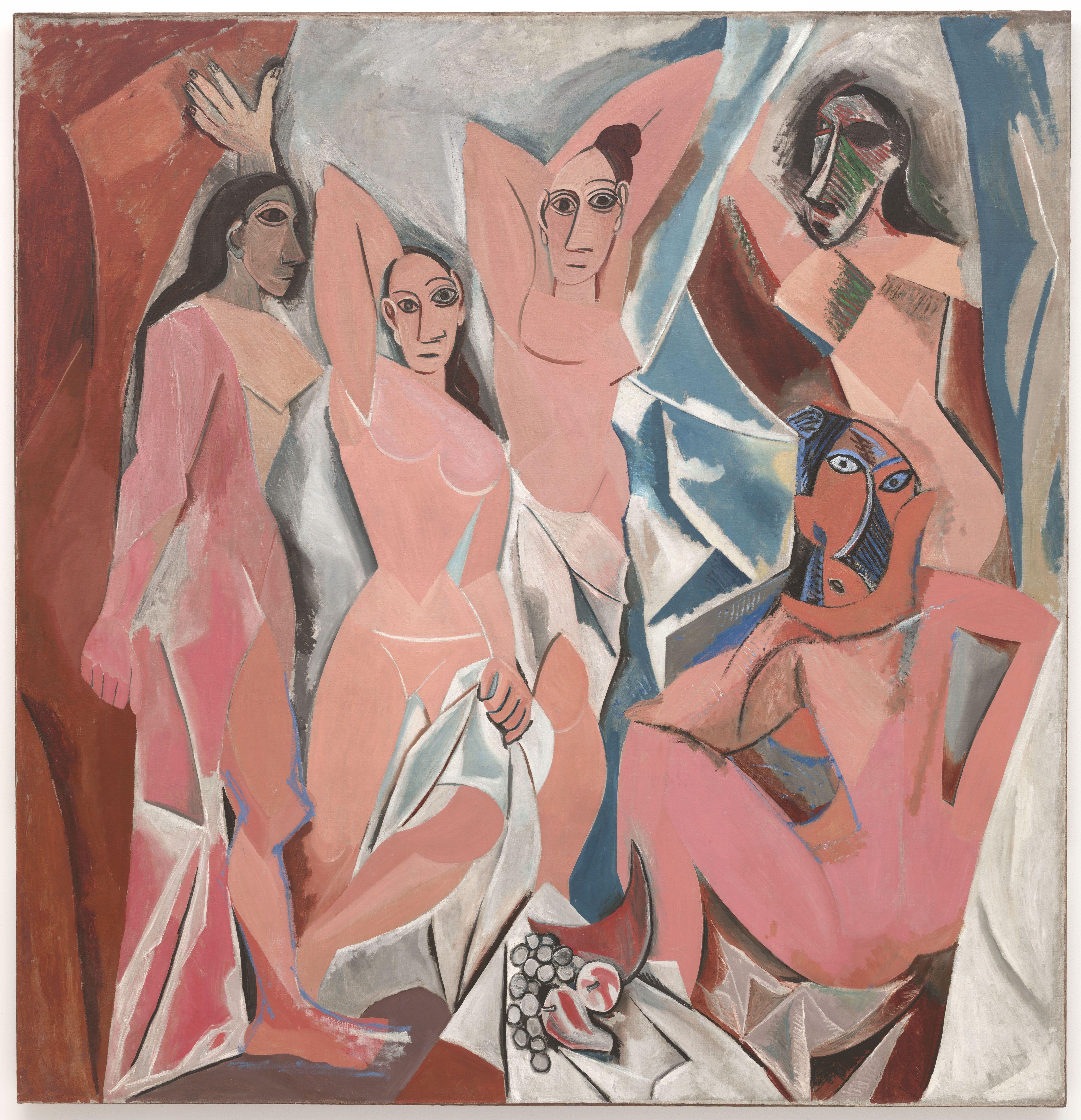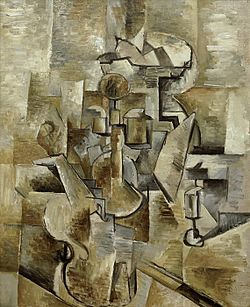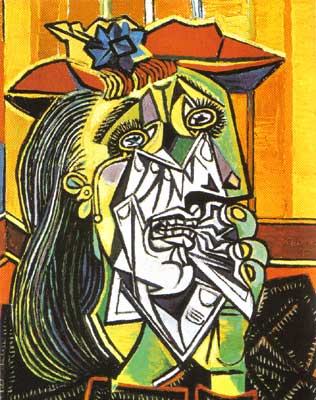Now last post, I had talked about the artistic comedy duo, Gilbert and George, but in this post however, I'am going to be talking about a very influential, but most certainly a somewhat political and mysterious artist. This person goes by the stage name, Banksy.
 |
| Bansky's logo |
'Banksy' is a graffiti artist, painter, political activist and film maker, who is based in the United Kingdom. He is able to insert dark humour into his artwork, by executing them using a 'distinct' stencil drawing style. Banksy's work was made up of the Bristol underground scene, this mainly involves collaborations between him and other artists.
According to author and graphic designer, Tristan Manco and the book
Home Sweet Home, Banksy "was born in 1974 and raised in Bristol, England. The son of a photocopier technician, he trained as a butcher, but became involved in graffiti during the great Bristol aerosol boom of the late 1980's". (This bit of information is not 100% confirmed because his true background and upbringing are still unknown to this day as he has still kept himself a mystery to this very day.) Observers have often noted that his art style is similar to that of an artist called Blek le Rat,(who began working with stencils in 1981 in Paris, France) but Banksy has insisted that he was inspired by another artist called Robert Del Naga, (also known as 3D) who was also a graffiti artist and would later become a founding member of a band called
Massive Attack.
Though known for his contempt towards the government for labelling graffiti as vandalism, Banksy is still able to display his artwork on display all over public city surfaces such as walls, he even went far enough to actually build his own physical prop pieces.
Banksy would later make a documentary that would be released in 2010 called "
Exit Through the Gift Shop" which critics would describe as "the world's first street art disaster movie".
So now, let me give you an in depth analysis on some of Banksy's graffiti artwork.

This picture displays a member of the government police department making sure that Dorothy Gale from "The Wizard of Oz" (as played by Judy Garland) doesn't have anything illegal, such any form of drugs, stuffed into her picnic basket. It should probably be a little joke concerning Dorothy's positive personality or the the fact that the Land of Oz may have been a figment of Dorothy's imagination, but in the film, even though Dorothy looks like a full grown woman, she is actually meant to be portrayed as a little girl, so to me, I don't think that joke works because a child around her age shouldn't actually be exposed to any illegal drugs whatsoever. But the artwork itself is actually really good, I really like how Banksy puts a lot of detail in his work, especially because it makes pictures like this one look rather realistic. It's also interesting to note that there is also no colour in this picture except for the policeman's glove (which is coloured light aqua). It is also a bit of an obvious reference to the fact that "The Wizard of Oz" started without any colour whatsoever, until Dorothy and her dog Toto end up in Oz after being sucked away by a tornado.

In this picture, a child is crying because she is being taken away by two of the most popular children's icons ever to surface the world of popular culture, Disney mascot Mickey Mouse (as portrayed at the Disney World/Disneyland theme parks) and the mascot of McDonald's restaurants, Ronald McDonald the clown. I think the reason why this little girl is screaming is probably because Mickey and Ronald are supposedly portrayed as (
sorry for having to say this :( so brace yourselves!) pedophiles, whom are probably two men who have disguised themselves as both one the most beloved and kindhearted characters in all family media and one the most hated and annoying characters who only caters to greedy children, and they appear to be ready to rape this poor child. This would be because she didn't listen to her parents when they told her not to trust or talk to any strangers, especially if those strangers look like the child's favorite characters. It is a social satire on the dangers of pedophillia, and the message is that some people are not who you think they are compared to how you se them on TV. The colour is nowhere to be seen, but the yellow on both "Mickey" and "Ronald's" clothes really stick out the most, though for "Mickey" this is slightly inaccurate because though he does wear a yellow bow tie at Disneyland/World, his trousers are actually a bright red, not yellow, though that one comment was just a nitpick coming from me because I'm a bit of a Disney nerd. Anyway the lack any colour except for yellow gives this graffiti artwork a sense of darkness and sorrow, especially for the little girl because as stated before, she is under great peril, and the authority figures are probably not going to save her from being raped, and it will be an unfortunate life lesson that she may never forget for a very long time.

Now here's an interesting evaluation. This graffiti depicts a little boy with a skateboard, writing on a chalkboard "I must not copy what I see on 'The Simpsons"while ironically, this situation is actually a parody of the "chalkboard gags" from the opening sequence of almost every episode of "The Simpsons", and the boy is portrayed as an obvious parody of one of the main characters, the trouble making son, Bart Simpson. It is also really interesting because back in 2010, Banksy was called over by "The Simpsons" production staff after they had seen his documentary and asked him to storyboard a couch for one of their newer episodes, titled "MoneyBART"(a reference to the 2002 book "Moneyball" which would later be adapted into a feature length film in 2011.) which involved Bart, Lisa and the other kids of Springfield competing in a game of baseball. The couch gag involved was uploaded to YouTube before the actual episode had aired in the USA on the channel FOX on 10th October, 2010. (here's the link for those who want to see the video for themselves https://www.youtube.com/watch?v=DX1iplQQJTo). Once again, the drawing style is realistic, Bart is portrayed as if he were a real boy who had gotten himself in trouble. Unlike the previous pictures, there is a lot of colour on Bart, just like on the show except for the fact that because he is drawn and portrayed realistically, he does not have yellow skin, in case that wasn't obvious (which it is of course, since some of my readers have probably watched "The Simpsons" at some point while the show was on television).

Now for something that has nothing to do with anything from pop culture. This graffiti depicts the personification of death itself (A.K.A. The Grim Reaper). Death is depicted riding on a boat looking for somebody who's soul may have to be reaped very soon. He is also portrayed like he was rowing through the river styx from Greek Mythology which is in and of itself an interesting analogy. Banksy had decided that he would use a white spray can for this graffiti and it came out really to look really spooky, because in my opinion, the white spray can made this picture look very ghost like in nature, as ghosts are the dead spirits of people who have died under unfortunate circumstances, and Death himself is the one looking for those spirits, so that he could take them to either Heaven or Hell. It's also impressive how Banksy was able to create this picture across the city rivers without getting himself wet, unless of course he was wearing waterproof clothes and he had managed spray the picture without trying to get himself wet. Overall this graffiti has a good sense of giving you guys the chills, that is if you feel just a little bit scared while looking at this particular picture.

Now this one is really depressing, a little girl is sitting down on the floor, looking very depressed like nobody actually cares about her, and that her parents were probably so abusive that he managed to run away from them. The balloon that she is holding is probably the one thing that she took with her when she ran away, and has kept it for a little while now. (She had probably just ran away not too long ago from her perspective.) She is so upset, that she probably thinks that nobody loves her anymore and she feels that she may have no future whatsoever. It is as if she has given up on life, and that she has nowhere to go anymore. This graffiti is social commentary on how young children are abused by their parents, run away from them while getting lost at the same time, and feel that their is no hope for them left in the world, disregarding the possibility that there might be nice people out there that could give them a better life and family to make them happy and go on living, so that there may be a much brighter future for them in the end. Again, in terms of artwork the picture is realistic, the lack of colour for the little girl makes the picture very tragic, and the words
No Future, are coloured in red so that it symbolizes a sense of anger, abuse, tragedy and sadness for the poor child.
Lastly, this political picture about government using CCTV as a security system for the whole world (though not to exaggerated means though). This is displayed ironically because it shows a policeman (and his dog) is making sure that the child in the red coat washes of a graffiti that says
ONE NATION UNDER CCTV and he has a camera so that he can take pictures him washing the propaganda of the wall and show the evidence the authorities. It is ironic because the police is making a child wash of political agenda made using graffiti, as part of a punishment for vandalism, and yet Banksy painted this graffiti on the wall of a building and he got away with it, but that is mainly because he is a professional artist who knows that he making graffiti art even though it will get him into trouble.In April 2009, under the council's order, this piece of artwork was eventually painted over with grey paint, so that the picture would be 'erased', due to the fact that the artwork was still technically vandalism and Banksy would have still been arrested because of the consequence. The overall picture however had a nice balance of colour, the picture was an ironic bit of tongue in the cheek humour and above all else, it may have been a bit sad to not get the chance to see the artwork up close, but it was all for the greater good, because if this picture had not been erased, regardless of his reputation, Banksy would have been in jail for goodness knows how many years, and it would've been a shame to never hear from this mysterious person ever again (that is until it would have been time for him to leave jail and start a new profession all together, at least that's what I think).
So my final verdict on Banksy's artwork, it's actually very interesting how much of an impact this artist has made throughout the years, with both the reputation he gets for vandalism and for being able to be conspicuous about his true identity. I'd say it is pretty darn impressive.




















































